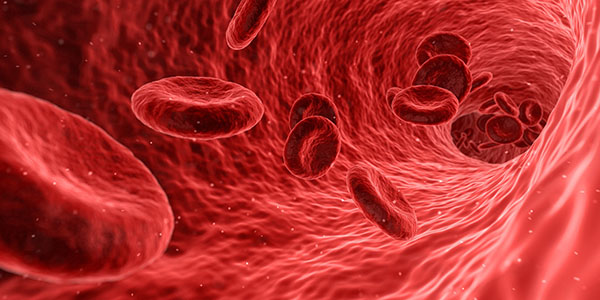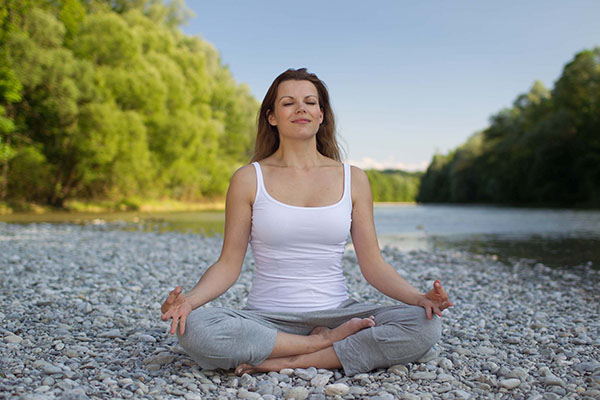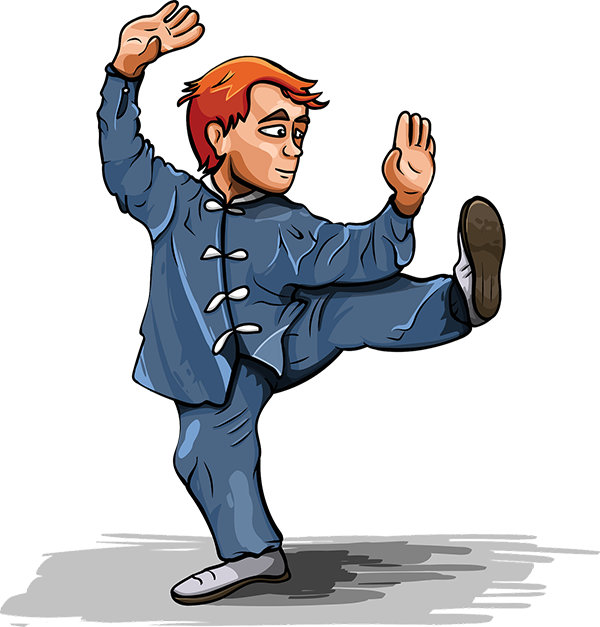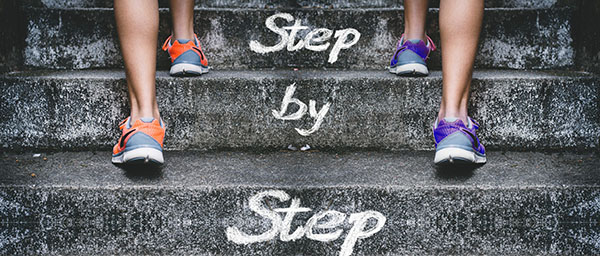
Commonly referred to as the three regulations – our mind, body, and breath are the three tools that we use most commonly within our qigong practice to work with our energy. Sometimes additional external tools are also used, but the mind, body and breath always remain central to the practice.
In considering different practices, it is helpful to understand the role each of these tools plays. While all three are interconnected, different types of practice will often use one of these tools more or less than the others as a way to affect the system as a whole. Understanding the role each of these tools plays within a practice helps us to be able to use them most effectively, and sometimes to modify and adapt practices when we need to, so that we can still get the benefits we seek even when we encounter limits in our ability to use one or another of these tools.
In this article we will look at the mind, body, and breath as a continuum, and consider how each of these tools interact with each other to work effectively with our energy.
The Body
The body is the dense, solid end of the continuum. We use physical movement, posture, and sometimes touch or massage as ways to directly activate and move our energy. Within our qigong practice this stimulus is often clear and obvious. If you massage a particular part of your body, then that will activate the energy flow in that area. If you stretch or load a part of your body that a meridian runs through, then that will have an effect on that meridian – opening or activating the energy within it. Sometimes the stimulus is a bit more subtle – the fine details of how standing in a particular posture or changing the angle of your hand effects the energy flow internally or within distant parts of your body or energy system will often not be obvious to a beginner, but good teaching as well as the more finetuned awareness you develop from consistent practice makes the effect of these more subtle aspects of how we use our body clear over time. The changing internal pressures caused by standing in different postures or moving in different ways can stimulate the activity of our organs, nerves, and blood flow.

Working with our body in this was also has a flow on effect on our breath. Assuming different postures and moving in different ways can make it more or less easy to breathe, and in some qigong exercises we use the external movement of our body as a way to strengthen and support the action of our breath, using external movement to help to open the ribs, or to support the diaphragm and abdomen in moving freely. Moving more slowly helps us to breathe more slowly. Coordinating our breath with our movement can help to regulate the rhythm and depth of our breath using our movement to guide the process.
The way we use our body also has an indirect effect on our mind. Different types of posture and movement require more or less exertion and or conscious control. This can help the mind to become more active or more restful according to our purposes within a practice. Different types of posture and movement can also evoke memories and emotions which affect the way our mind perceives our experience. These can be used as a way to help the mind to process and release unhelpful thought patterns that we may be holding onto, or to cultivate and support the development of new patterns of thought. Congruent postures and patterns of physical movement help to develop the desired patterns within our mind as well. If we seek calmness in our mind – then a posture of calmness in our body will help to support our mind in achieving and maintaining this state. If the body is habitually in a posture or movement pattern of agitation – then it will be very difficult for our mind to develop a state contrary to this. The same is true of any number of other states we may wish to cultivate.
Equally sometimes to release a deeply held pattern within our energy, we need to allow our body to express the postures and movements of that pattern to be able to process it and let it go. For example, the emotion of anger is something that it is common for people to suppress. They don’t want to acknowledge this emotion within themselves and so they force themselves to ‘act’ calm. The energy of this emotion becomes trapped within them, often leading to tension and stiffness within the body as the natural expression of this emotion is held down by a veneer of calm on the surface. But the anger is still there, and the thoughts and other patterns associated with it can rise to the surface unexpectedly. The stuck pattern of this emotion can also stop us from being fully responsive to the changing situation around us. We are so busy suppressing an emotion that we have not processed and released that we cannot respond authentically to what is happening in the current moment. The suppressed emotional energy can also stagnate within the body leading to various types of illness.
Moving in ways that allow this energy to be processed and expressed can help bring this trapped energy to the surface and allow it to be released. This does not mean that any rash ‘angry’ action needs to be taken, but rather the movement of the body allows that energy to be processed and to flow through in a healthy way, leaving us unblocked and free to truly experience the flow of life. Physical movements within different qigong practices consciously apply types of movement that allow these trapped energies to be processed and released, with a flow on effect to both how we feel and think.
The Breath
Our breath occupies a special place in the middle of the continuum with strong effects on both the mind and the body. Our breath physically expands and contracts our whole body, literally stretching and massaging all of the organs and tissues of our body from within. Breathing in different ways provides more or less support for the external structures of our bodies, helping to support either greater activation of the nerves and muscles, or greater relaxation, according to our needs when the right method of breathing is used. When we consciously direct the action of our breath we can use it to selectively affect different parts of the body, leading our energy into the tissues in these areas.

The way we breathe also greatly affects our mind. One of the most simple examples of this is when we breath faster our body and mind tend to become more active, and when we breathe more slowly our body and mind both tend to relax, but we can also work with our breath in many more nuanced ways to achieve specific effects.
Because of the place the breath occupies between our mind and body in this continuum, many of the changes in our breath occur instinctively as our body affects our mind, or as our mind seeks to affect our body. As we become more aware of the role our breath plays in affecting the energy of our whole system we can begin to direct this process more consciously to benefit both our mind and body and to become more skilled with our energy.
The Mind
Our mind plays a big role in directing all of our experience. When working with our body, it is our mind that directs the body to move in a certain way, or to assume a certain posture. When working consciously with our breath, the mind chooses and directs the specific method or pattern that we use. Beyond this we can also use our mind to direct our energy more directly, sometimes specifically directing the energy to flow into different parts of the body, or at other times adjusting the quality of the energy, making it hotter, colder or working with adjusting any number of different characteristics within our energy.
Sometimes this is done by simply directing the awareness. There is an old saying that where the mind goes the energy (qi) flows. By simply directing our awareness and intention to different parts of our body we can have a substantial effect on the flow of energy.
At other times symbolism is used as a way to bring out different characteristics within our energy. For example we might think of moving like a certain animal, not only as a way to remember the details of the movement itself, but also because imagining ourselves as that animal causes other subtle changes within our body and energy – the tension in our muscles, the way different organs function, and even the release of different hormones – all of which contribute to the overall energy that will be stimulated by the practice. We might also use other imagery and symbolism such as colours, numbers with specific meanings, and abstract constructs of attitudes or concepts which we may hold in our minds within our practice to affect the quality and characteristics of the energy we work with.
Interactions Along the Continuum
Our mind, body, and breath will always all be affected by any qigong practice that we may do. Sometimes we will consciously use all of them together, and at other times we may focus on just one or two of these tools and allow the effect to flow through to these other aspects of ourselves as a natural consequence of what we do with the ones we are focusing on.

Within some qigong practices we may move or stand in a very specific way, while breathing in a specific way, and also actively directing our awareness or holding certain imagery within our minds – all three tools very clearly and actively used within the practice. There is a great synergy in working with all of these tools together, each reinforcing and strengthening the others, leading to a greater and more harmonious effect on our energy as a whole. But there are also qigong practices which focus just on a physical movement or posture, with no particular active focus on what you should do with your breath or your mind. In these practices the breath and mind are still affected, but this is achieved in a more passive way. As you work with the practice over time you will find that the movement or posture naturally brings about changes in the breath and the mind, all three parts naturally find harmony with one another, so focusing on just one of the tools does not mean that we are not having an effect on the others.
Similarly within qigong there are practices that just focus on the breath. There are no particular instructions of what to do with your body or mind – just a particular method of breathing. But as you practice, the breathing exercise will naturally lead to changes in the body and mind.
And of course there are qigong practices that primarily just focus on using the mind. These are often within the context of specific meditations which are used to develop skills of concentration and the ability to more easily direct energy through the body and energy systems and adjust the qualities of the energy. In the process of directing the energy and adjusting its quality with the mind, changes naturally occur inside the body and with the breathing to support this process. For example, when directly energy to your right foot, the main tool you may use is your mind to direct this process, but in order to achieve it a whole series of changes will occur within your body. You may naturally adjust your posture and the tension in various tissues within your body to allow the energy to pass through to where it is going. It is likely that you will activate nerves not just in your foot but also between your brain and your foot – so right down your spine and through your hip and leg. Blood vessels will dilate to allow more blood to flow into the area to support the increased cellular activity that will occur as the energy flows there. Your breathing may deepen and speed up or slow down according to what is needed to support these changes and energy flow. If you direct a specific quality of energy this may also cause different hormones to be released, different organs to become more or less active, and subtle changes in the vibration and other aspects of the activity in the cells right throughout your whole body to create the desired quality within the energy. So even though the mind is the primary driver of this process, it leads to a whole series of real physical changes within both the body and breath as well.
Applying This Understanding to Your Qigong Practice
Understanding how these three tools can be used either together or separately to affect the whole system will help us to understand more fully how our qigong practice actually works. This can help us to practice more effectively – really making the most of the role each of these tools can play in directly our energy. It can also help us to be more flexible in our practice and able to modify and adjust qigong practices when we need to, either for ourselves, or if you are a qigong teacher – for those that you teach.
There may be times that for any number of reasons it is difficult to work with the mind within a qigong practice. Perhaps you or a student is too overwhelmed by things that they have been thinking about. Of course calming and clearing the mind is desirable in this situation, but giving them one more thing to think about may not be effective or beneficial. Instead it may be more effective to choose a practice that focuses on using just the body, or just the breath. A simple practice to focus on, and allow the effects to flow through indirectly to the mind to allow it to become clear and calm naturally – after which working directly with the mind may then become achievable and effective.

Or, the body may be weakened by illness or injured to such an extent that it is not practical to work with it directly using specific movements or physical postures. In these situations we can work with the energy from the other end of the spectrum and use our mind and breath to direct the energy into the affected parts of the body to help them to begin to recover and regain their health and strength.
There may also be specific qigong practices that are not impossible for you, but you simply find difficult. For example perhaps there are qigong meditations that use your mind to develop specific skills of awareness and ability to direct your energy. Working with the mind alone in some of these meditations may be very challenging, so you may find it useful to use some additional stimulus from the other end of the continuum to help you to begin with. For example, if you are practicing directing energy to different parts of your body, you might also hold your hands above or touch that part of your body to help bring your awareness there. You might even move that part of your body to connect the activity there to what you are learning to direct with you mind. As you become more comfortable and skillful with this process, you may then choose to use the overt touch or movement of your body less, and allow your mind to take a stronger role in directing this activity internally.
Similarly if there are movements that are challenging for you for whatever reason, you might choose to do them to the best of your ability but also work more strongly with your mind to reinforce and strengthen the effect this will have on your energy. This could mean that you do the movement with a reduced range of motion, while also directing your mind in a very focused way to really feel everything occurring within the movement and open and strengthen the tissues little by little so that you can gradually increase the range of motion. It can even mean not doing the movement physically at all, but using your mind to imagine moving your body freely through the movement. Doing this will make changes inside the body to allow the energy to flow as if you had done the movement, and can gradually build health and strength in the tissues so that they may eventually be able to start doing the movement physically as well.
You can also apply this knowledge within qigong practices you are quite proficient in to make them even more powerfully effective. You might find some qigong movements quite easy, but perhaps you could engage your mind and awareness more fully within the movement, or perhaps you could apply your breath more effectively to co-ordinate between your mind and body so they act together more harmoniously.
Conclusion
The essence of our qigong practice is to work with our energy and develop skill with it. In order to do that we work with our mind, body, and breath together. Understanding the role that each of these plays can help us to use them more effectively in our practice, drawing more or less from one tool or another according to our needs in different situations, working from the other end of the continuum when we may find ourselves struggling with aspects of a particular practice, or consciously using them all together to reinforce each other to create greater synergy in developing our skill with our living energy.